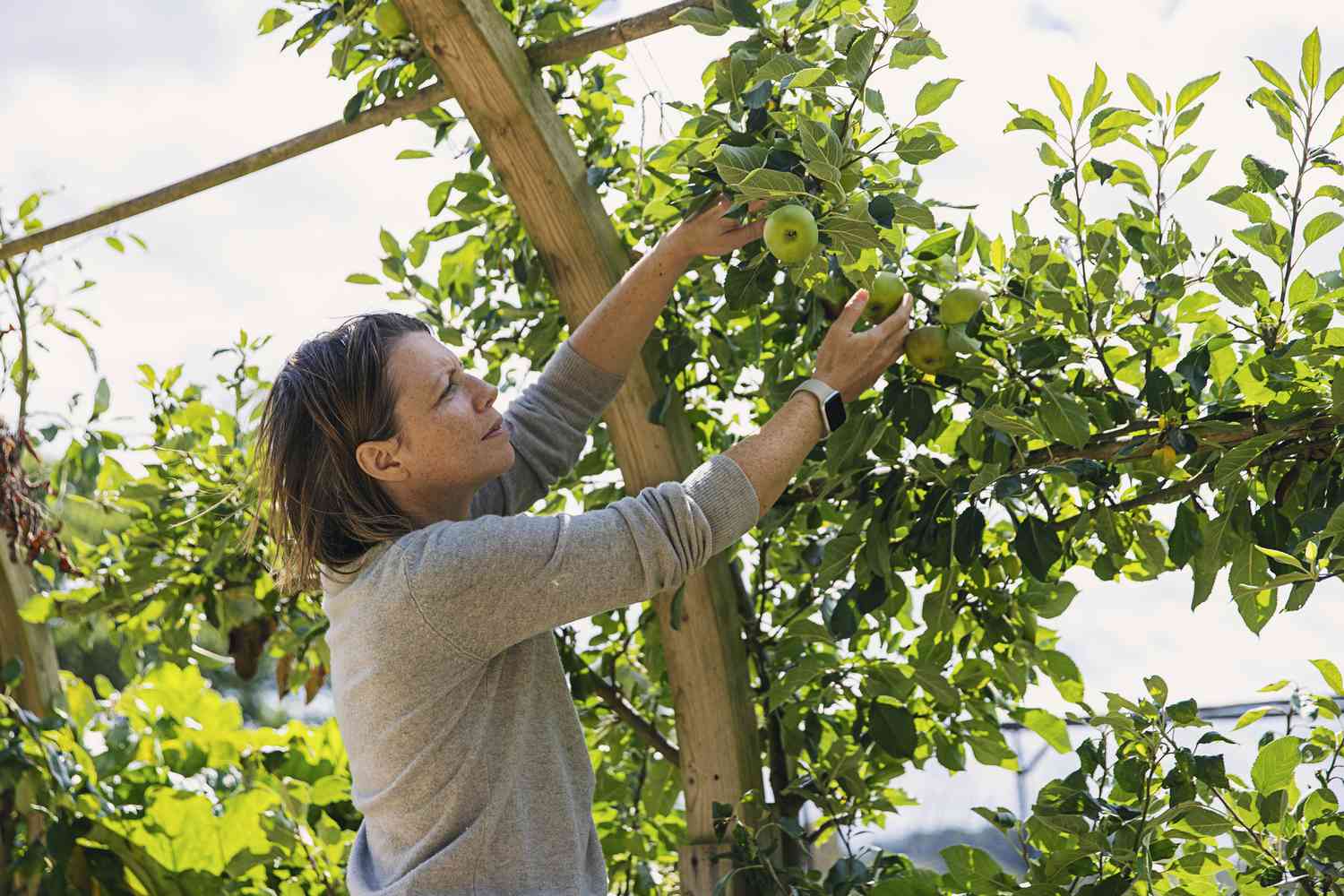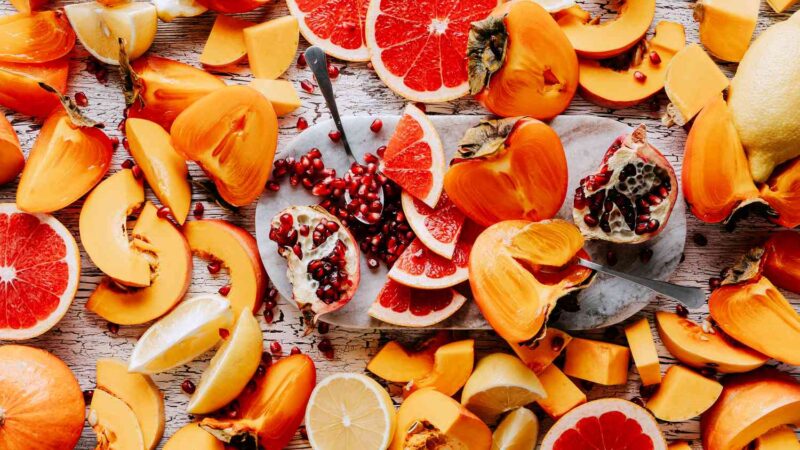Tips and Tricks for Successful Fruit Tree Cultivation

The first major step in growing fruit trees is deciding which varieties to cultivate. The choice depends on a range of factors, such as local climate, available space, soil conditions, and personal taste preferences. Some gardeners opt for traditional British apple varieties known for their resilience in cooler, temperate climates, whereas others experiment with peaches, apricots, or more unusual plums. Modern breeding has expanded the range of fruit trees suitable for British gardens, making once-delicate species more adaptable than ever before.
You might also consider flowering period. Pollination compatibility is important, particularly if you are growing apples, pears, or cherries. Many fruit trees are self-fertile, meaning they do not require another tree to produce fruit, but others rely on cross-pollination from a different cultivar blossoming at the same time. Without a companion tree that shares a similar flowering period, pollination might be incomplete, and fruit yield can drop significantly. In the case of apple trees, some heritage varieties are notorious for requiring a suitable pollinator. Checking pollination charts or seeking expert nursery advice can be helpful to ensure that your choices will yield a bountiful harvest.
A nursery specialist at CRJ Fruit Trees advises: “From soil type to rootstock selection, it’s crucial that gardeners match their local climate and soil conditions with the right fruit trees. This ensures that the trees receive the best start possible. Adequate watering in the early years and appropriate pruning practices also contribute significantly to long-term health.”
Rootstock selection also plays a vital role. Dwarfing rootstocks control a tree’s mature size, enabling fruit growers with smaller plots to keep their trees at a manageable height. Conversely, if you want a more expansive tree for a large orchard or a field boundary, a semi-dwarf or vigorous rootstock will encourage robust growth and extensive root systems. It is always wise to anticipate how a fruit tree might grow over 5, 10, or even 20 years, because the rootstock’s influence on size, vigour, and cropping capacity is profound. Balancing your immediate preferences with the long-term practicalities of pruning, harvesting, and space is the key.
Preparing the Soil Before Planting
Soil preparation is one of the most crucial steps in guaranteeing the success of newly planted fruit trees. Well-draining soil with a balance of organic matter and nutrients will help roots establish, anchor the tree firmly, and provide a steady supply of nourishment. If you have heavy clay, consider amending it with organic matter such as compost to lighten the texture. This improves drainage and aeration, which is especially important if your region experiences prolonged wet or cold conditions. On the other hand, sandy soil may need additional organic content to help it retain moisture and to slow down the leaching of nutrients.
Knowing the pH level of your soil is also beneficial. Most fruit trees prefer slightly acidic to neutral pH levels, generally in the range of 6.0 to 7.0. Testing your soil’s pH can be done with a basic kit from a garden centre, allowing you to make small adjustments by adding lime to raise the pH or sulphur to lower it. Excessively acidic or alkaline conditions can inhibit the absorption of certain essential minerals, leading to poorer growth and reduced yields.
Once you have an understanding of your soil composition and pH, clearing the ground of weeds, lawn turf, and any debris is essential. Competing vegetation can sap nutrients from the soil, depriving young fruit trees of the resources they need to establish strong root systems in their first growing seasons. Incorporating well-rotted compost or manure around the planting hole can offer a gentle nutrient supply, improving soil fertility without overwhelming delicate new roots.
Effective Planting Techniques
Although fruit trees may differ in their precise requirements, a few general principles apply to nearly all varieties. Many experts recommend digging a hole approximately twice the diameter of the tree’s root system and no deeper than the root ball itself. This creates a comfortably sized pocket of loosened soil to promote new root growth without encouraging the roots to circle within the hole. When placing the tree in the planting hole, be mindful of the graft union if the tree is grafted onto a rootstock; ensure the union sits above soil level to prevent scion rooting.
Backfilling the hole should be done gradually, tamping the soil gently to eliminate large air pockets that could expose roots and lead to desiccation. It is generally not advisable to place large amounts of synthetic fertiliser directly into the planting hole, as this can result in chemical burning of the fragile new roots. Instead, blend a moderate quantity of compost or well-rotted organic matter with your original soil. After planting, water the tree thoroughly to help the soil settle around the roots. Adding a mulch ring of organic matter around the base, leaving a small gap near the trunk to prevent rot, helps retain moisture, moderate soil temperature, and control weeds.
Providing Adequate Water and Nutrients
Water management is critical for fruit trees at nearly every stage, but the first few years are particularly vital. A newly planted tree without an extensive root system is especially susceptible to drought or inconsistent rainfall. Watering deeply and less frequently encourages the roots to grow downward, seeking moisture from deeper soil layers. Shallow, frequent watering can result in a more superficial root system that may struggle during hot, dry spells.
In the months following planting, rainfall patterns often dictate how much additional irrigation is needed. After the establishment phase, mature fruit trees can often endure minor fluctuations in moisture levels but still thrive better with steady, well-planned watering. Applying organic mulch around the root zone helps retain moisture, prevents soil compaction, and slowly decomposes to provide nutrients over time. In terms of fertiliser, balanced formulations that incorporate nitrogen, phosphorus, and potassium will generally encourage healthy leaf growth, root development, and fruit production. However, it is wise to avoid over-fertilising, particularly with high-nitrogen products, as this can lead to excessive vegetative growth at the expense of fruiting.
Organic methods such as compost teas and well-rotted manure can be beneficial in delivering a range of macro and micronutrients in a gentler manner. Every so often, a soil test can help you detect any nutrient deficiencies early, allowing for precise amendments. This can be more beneficial than blindly applying fertilisers, as it reduces the risk of nutrient imbalances or harm to beneficial soil organisms.
Guarding Against Common Pests and Diseases
Just like other plants, fruit trees face challenges from various pests and diseases. Codling moth larvae can burrow into apples, pear midge affects young pear fruits, and aphids can weaken young shoots by extracting sap. Fungal diseases like apple scab or brown rot can damage both the fruit and foliage, while bacterial infections can cause cankers or stem damage. Proactive measures, rather than reactionary treatments, are key to minimising these threats.
Keeping the orchard or garden floor clear of fallen leaves, rotting fruit, and other organic debris reduces hiding spots for pests and can slow the spread of fungal spores. Pruning to maintain good airflow and letting in sufficient light can minimise the humidity levels that allow fungi to thrive. Regular observation allows gardeners to detect early signs of trouble, such as discoloured leaves or small holes in fruit. Natural remedies like horticultural oils and soaps, as well as encouraging predatory insects, can prove effective. Nonetheless, severe cases might necessitate targeted organic or chemical sprays, applied with caution to protect pollinators and other beneficial species.
In regions with damp summers, fruit trees may be particularly prone to fungal outbreaks, highlighting the importance of planting disease-resistant varieties. Many modern cultivars have been bred with robust defences against common diseases, potentially reducing the need for continual chemical interventions. Rotating or alternating treatments can also keep pests from developing resistance, though this tactic is more commonly associated with annual crops. Each site has its own set of challenges, and local knowledge or guidance from a reputable nursery helps you address specific threats effectively.
Pruning and Training for Optimal Growth
Pruning is an essential maintenance task that shapes a tree’s framework, improves air circulation, and controls size. For young fruit trees, formative pruning establishes the basic structure that will support heavy fruit loads in the future. Removing crossing or weak branches early on reduces the likelihood of breakage and encourages the growth of strong, well-placed branches. Typically performed when the tree is dormant, formative pruning minimises stress and gives the plant time to heal before the vigorous spring growth begins.
Established trees also benefit from annual or biennial pruning to remove diseased, damaged, or overcrowded limbs. Thinning out the canopy allows sunlight to penetrate to the inner branches, fostering better bud formation and more uniform ripening of fruits. Summer pruning, especially for certain types of fruit trees like trained espaliers or cordons, can help maintain shape and restrict overly vigorous shoots. Tools should always be sharp and sterilised to reduce the risk of transmitting diseases between cuts. Technique varies according to tree species and desired form, so researching or consulting experienced orchardists can guide you to the appropriate method.
Training systems such as espaliers, fan-trained trees, or cordons are popular in smaller gardens or along walls and fences. These methods can be both decorative and practical, enabling gardeners to maximise fruit production in limited spaces. Although training requires consistent attention, the disciplined structure often helps with harvesting, spraying, and protecting trees from strong winds or frost damage. With a strong framework established, fruit production can be both abundant and manageable.
Pollination and Environmental Factors
Pollination is a fundamental aspect of fruit production. Even self-fertile varieties can yield heavier, more consistent crops when cross-pollinated by a compatible partner. The presence of bees, hoverflies, and other pollinators is essential during spring blossoming periods. Ensuring your garden is hospitable to these insects, by planting pollinator-friendly flowers and minimising pesticide use, can significantly enhance your fruit set. If pollinating insects are scarce, or your region often experiences rainy, cold weather during spring, pollination might be unreliable, and harvests may suffer.
Wind exposure is another environmental factor to consider. Strong winds can stress trees, snapping branches or blowing off blooms before they can set fruit. Choosing a sheltered spot or planting windbreaks like hedges may mitigate these problems. Likewise, frost pockets can pose a threat to early-flowering species such as apricots, peaches, or certain plum varieties. Evaluating microclimates within your garden can guide you to the ideal planting spots where fruit trees receive enough sunlight without suffering from harsh winds or late-season frosts.
For those eager to grow more delicate species in the UK’s unpredictable climate, using protective measures like horticultural fleece or cold frames can help shield blossoms from unexpected temperature drops. Additionally, planting fruit trees against south-facing walls can create a warmth trap, extending the growing season and sometimes enabling more exotic fruits to ripen. Such measures can be particularly beneficial in regions prone to variable weather, making it feasible for dedicated gardeners to experiment with less conventional fruit trees successfully.
Blossom Care and Fruit Thinning
Encouraging healthy blossom sets the stage for a bumper fruit crop, but not all blossoms can develop into full-size fruit. Trees often produce more flowers than they can effectively support, leading to natural thinning where a percentage of blossoms simply fall away. In some cases, manual thinning is recommended, removing excess fruitlets to prevent the tree from overburdening itself. Overly heavy cropping can lead to smaller, lower-quality fruits and can exhaust the tree, leaving it more vulnerable to pests, diseases, and nutrient deficiencies. It can also cause a cycle called biennial bearing, where the tree alternates between a year of heavy fruiting and a year of very little.
When thinning, start by removing any malformed or damaged fruits first. Then, ensure there is enough space for the developing fruits to grow without crowding or rubbing against each other. For apples and pears, leaving a gap of roughly 10 to 15 cm between developing fruits is often suggested, although this can vary depending on the variety and ultimate fruit size. This process might feel counterintuitive, as it involves discarding potential harvest, but it is a proven method of encouraging higher-quality, more flavourful produce.
In addition to fruit thinning, some gardeners practise blossom thinning for certain species, particularly peaches and nectarines, where blossoms are profuse. Removing excess flowers before they can set fruit can be a time-saver, particularly if you anticipate that the tree will drop them later anyway. For best results, regular observation and a balanced approach to thinning will help maintain tree vigour and promote consistent harvests year after year.
Dealing with Unpredictable Weather
British weather is famously variable, and this unpredictability can affect fruit tree development. Late frosts might damage blossom, while summer heatwaves could stress newly planted trees in dry soils. Adaptability is crucial for gardeners. Keeping an eye on weather forecasts around flowering time can provide the warning needed to employ frost protection measures, such as covering trees overnight with fleece or cloth. In areas prone to heavy rainfall, ensuring good drainage through raised beds or mounded soil can protect roots from waterlogging.
Prolonged periods of rain can also hinder pollination if bees remain sheltering and blossoms are never properly fertilised. In situations like these, some orchardists resort to artificial pollination techniques or place beehives nearby to ensure pollinator presence. Conversely, in extremely hot or dry spells, more frequent watering and using shade netting or strategic planting can guard against sunscald on younger trunks and branches. The goal is to provide consistent support and anticipate potential complications, thereby minimising stress on the trees.
Harvesting at the Optimal Time
Fruit maturity is dictated by complex factors including sunlight, temperatures, and variety-specific genetic traits. Picking your fruits at the right moment ensures peak flavour, texture, and nutritional content. Apples, for instance, can be tested by gently twisting them on the branch; if they come off easily with the stalk attached, they are typically ready to harvest. Some varieties are best eaten straight away, while others can be stored for several months under the right conditions.
Stone fruits like plums, peaches, and apricots often exhibit a slight colour change and softening when they are ready. Pressing gently near the stem end can reveal whether the flesh has begun to soften. Overripe fruit can deteriorate quickly on the tree, attracting wasps and other pests, so it is wise to harvest these varieties promptly once they reach the desired ripeness. Cherries can be more challenging; their window of peak sweetness is short, making timing crucial for the best flavour. Observing your trees closely and taking note of any changes in appearance, texture, or aroma can help guide you to harvest each fruit at its optimum.
Handling fruit gently is paramount to reduce bruising, which can shorten storage life. If storing apples or pears, choose those without blemishes, as even minor damage can invite rot. A cool, slightly humid place such as a cellar or garage can extend the freshness of many fruits. Crates or racks that allow for airflow around each fruit are ideal. For gardeners with limited storage space, preserving fruit through freezing, canning, or making jams and chutneys is a practical and rewarding alternative.
Planting Multiple Tree Species for Biodiversity
Diversifying your garden with different fruit species can bring ecological benefits while delivering a variety of produce. Some trees blossom earlier, providing an early pollen source for bees emerging from winter. Other trees mature in the late summer or autumn, creating a longer period of interest and nourishment for pollinators. This extended coverage also enables you to spread out your harvesting schedule, making it more manageable and less prone to waste.
Mixed plantings of apples, pears, plums, cherries, and soft fruits like currants or gooseberries often form a thriving mini-ecosystem. Each species can attract different beneficial insects that prey on pests, naturally supporting the health of the whole garden. This integrated approach reduces dependence on chemical interventions and encourages stronger, more resilient plants. Additionally, if one species experiences a poor yield due to weather or disease, the others might still produce a successful crop, ensuring a level of food security and garden productivity.
Those with ample space can create wildlife corridors or integrate fruit trees into agroforestry systems, combining orchard crops with livestock or other plants. This not only diversifies the gardener’s yield but also contributes to environmental conservation by providing habitats for a broad range of flora and fauna. When carefully planned, a diverse planting strategy showcases the best of both ornamental and productive gardening, yielding beauty and benefits all season long.
Sustaining Your Orchard Through the Years
Long-term success with fruit trees hinges on consistency in care. Once the initial excitement of planting has passed, ongoing practices like timely watering, pest monitoring, and pruning maintain the orchard’s vitality. An established apple or pear tree can remain productive for decades if tended properly, often increasing yields and developing richer flavours as the tree matures. For certain fruit types like peaches or nectarines, which have shorter lifespans, consistent care is still essential for maximising productivity throughout their prime years.
Soil health remains central to any orchard management plan. Periodically adding organic matter, encouraging worm activity, and avoiding compaction all help preserve soil structure and fertility. Proper weed management around the base of the trunk reduces competition for nutrients and water. Mulches should be replenished and weeds pulled by hand or managed through methods that do not disturb tree roots significantly.
Regular health checks, examining the bark, leaves, and fruits, can identify emerging problems early. Prompt action often resolves minor issues before they escalate. For instance, noticing small cankers early and pruning out affected limbs might prevent the need for more drastic treatments later. Likewise, spotting fungal spots on leaves early enables gardeners to apply protective or curative measures immediately, limiting the spread. Adaptability, awareness, and a willingness to learn from each growing season can lead to improved methods and reliable harvests year after year.
Opportunities for Expansion and Experimentation
One of the joys of cultivating fruit trees is the range of possibilities for expansion and experimentation. As your confidence grows, you might explore grafting your own rootstocks, or top-working mature trees to produce multiple varieties on a single trunk. Backyard orchard culture allows for high-density planting, letting enthusiasts fit several different fruit species into limited spaces. By controlling tree size through pruning and rootstock choice, it becomes possible to cultivate a mini orchard in even the smallest of gardens.
If you have found success with conventional apples and pears, you might move on to less common fruits like medlars, quince, or mulberries. These can add novelty to the garden and provide unusual flavours to your kitchen. Additionally, orchard-floor management could branch into wildflower meadows, herbs, or beneficial companion plants that repel pests or enhance soil fertility. Each new addition brings its own rewards, along with a fresh learning curve that keeps gardening exciting.
Some gardeners may also find pleasure in systematically researching heritage or heirloom varieties. These older cultivars often have distinctive flavours, historical significance, or heightened resilience to local conditions. Propagating them not only preserves unique genetic resources but can also lead to fruitful discoveries about how to adapt orchard practices to meet diverse needs. The orchard, thus, can evolve into a living laboratory for trying out new approaches to sustainable horticulture, culminating in harvests that reflect your efforts to refine both traditional and innovative methods.
Integrating Technology and Modern Resources
In an age of smartphones and readily accessible gardening apps, technology offers an array of tools to optimise fruit tree care. Weather monitoring apps can provide accurate local forecasts, alerting gardeners to impending frost or heatwaves so they can take protective measures. There are also disease- and pest-identification apps that can assist with early detection, plus reminders for seasonal tasks like pruning, fertilising, and harvesting.
Though many seasoned growers rely on experience and intuition, combining traditional wisdom with modern data can yield productive results. Digital soil sensors can measure moisture levels and temperature, helping to refine irrigation schedules. Online forums and gardening communities also allow for idea exchange, best-practice tips, and quick responses to urgent questions, fostering a support network for novices and experts alike.
Yet, technology is no replacement for hands-on observation. Regularly walking through your orchard, examining fruitlets, noticing changes in leaf colour, and listening for buzzing pollinators is invaluable. Technology is best viewed as a supplementary resource, aiding decision-making rather than supplanting a gardener’s direct connection to the plants. The fusion of hands-on knowledge with digital innovation can give fruit trees the best possible environment to flourish.
Reflecting on the Rewards
Cultivating fruit trees can be both an art and a science, requiring patience, dedication, and an appetite for learning. The practical rewards are tangible: harvest baskets brimming with crisp apples, juicy pears, or succulent cherries, all grown in your own garden. Beyond the produce, fruit trees can impart a sense of connection to the land, marking the seasons through budding, blossoming, and fruiting cycles.
Each harvest can inspire fresh culinary adventures, from homemade preserves and pies to ciders and perries. Surplus fruits can be shared with family, friends, and neighbours, strengthening community bonds. Meanwhile, pruned branches and fallen leaves serve as compost or kindling, closing the resource loop within your own garden. Over time, you may find that your orchard evolves into a wildlife haven, a peaceful refuge from busy daily life, or even a teaching ground for children learning about plants, insects, and ecosystems.
Conclusion
Successful fruit tree cultivation rests on a core understanding of tree biology, meticulous soil preparation, and continuous, mindful care. Selecting varieties best suited to your local climate and soil type, pruning for both structure and health, providing consistent watering and nourishment, and working with, rather than against, natural pollinators all help establish a thriving orchard that can remain productive and resilient for many years.
Whether your goal is to supply your household with fresh produce or to try more unusual varieties that are less common in standard grocers, a well-chosen and well-tended collection of fruit trees offers numerous benefits. Many gardeners find that even after years of cultivating apples, pears, and other favourites, there is always something new to explore. For those just beginning, the satisfaction of watching a tiny sapling grow into a mature, fruit-bearing tree is uniquely fulfilling.
If you decide to buy fruit trees, choosing a reputable nursery that provides helpful guidance and healthy, correctly labelled stock is crucial. Careful planning and maintenance from the outset can avoid many pitfalls down the road. By remaining observant, adaptable, and invested in your orchard’s ongoing wellbeing, you can look forward to season after season of delicious harvests and a legacy of living beauty that endures.






